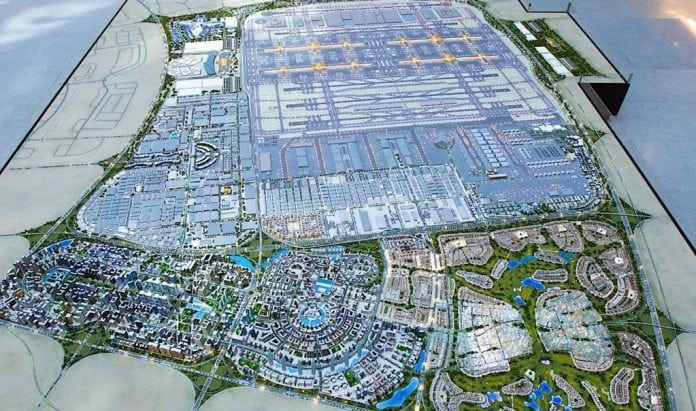
The combined value of the Expo 2020-related development projects has touched US$33 billion, AED 121 billion, as the UAE begins the three-year countdown for the six-month-long mega global event that will kick-off on October 20th, 2020, according to BNC Network, the largest and most comprehensive project research and intelligence provider in the Middle East and North Africa, MENA, region.
These projects include transport infrastructure, such as the expansion of the road networks, several highways, roundabouts, interchanges and Dubai Metro line to connect to the Expo 2020 Dubai site, Al Maktoum International Airport, DWC, to the rest of the main city of Dubai as well as mixed-use projects, residential, commercial, hospitality and golf course.
Mostly located at Dubai South, the 145-square kilometre mixed-use development with DWC as its centerpiece, most of the projects are expected to be completed before Expo 2020 opens its doors. Once completed, they will create 500,000 jobs with people living in a large community within the city.
Initially planned as an Aerotropolis, or ‘Airport City’ to serve DWC, the world’s largest greenfield airport development with a design capable of handling 220 million passengers and 16 million tonnes of cargo per annum, with five runways, six terminal buildings.
“As it stands, Dubai is way ahead in terms of its readiness to host Expo 2020, taking place in the Middle East for the first time in the event’s more than 150 years of history,” Avin Gidwani, Chief Executive Officer of BNC Network, said. “While driving past some of the major highways, one would notice the hectic construction activities on the highways and both sides of these highways, that reflect the pace of development work in the emirate. Most of the projects are on a fast-track basis, intended to expand the hotel inventory.”
“Both the public and private sectors have mobilised their best resources to complete these projects on time.”
Dubai South has been divided into separate functional districts, such as the Logistics District, to create a mega cargo hub, which, along with the Jebel Ali Port and Jebel Ali Free Zone, created one of the world’s largest sea-to-air logistic corridor. The 21 square kilometers Logistics District is designed to enable fast-cycle businesses and provide value-added services such as manufacturing and assembly.
It also will host AED 25 billion Residential District, with a plan for 1,100 low to mid-rise buildings that cover 715 hectares and are expected to accommodate 250,000 residents when complete.
The Commercial District is expected to provide employment opportunities for an estimated 150,000 people. It will consist of over 850 commercial towers with 3 to 5 star hotel lodging and is divided into eight zones: The Urban Village, Lake District, The Seven Towers, Central Park, Creative Commercial District, Grand Central, Business District and Residential Crescent.






















![The Square at Nad Al Sheba Gardens Now Open hope tax season treated you well! Just checking in—ready to refocus on growing your business? I remember how we discussed scaling your [specific aspect of their business, e.g., online presence] but paused due to time constraints. We now offer a streamlined 6-month plan that delivers real results without adding to your workload. Let me know if you'd like to chat—I’d love to help you pick up where we left off!](https://www.dubaichronicle.com/wp-content/uploads/2024/11/The-Square-5-218x150.jpg)









